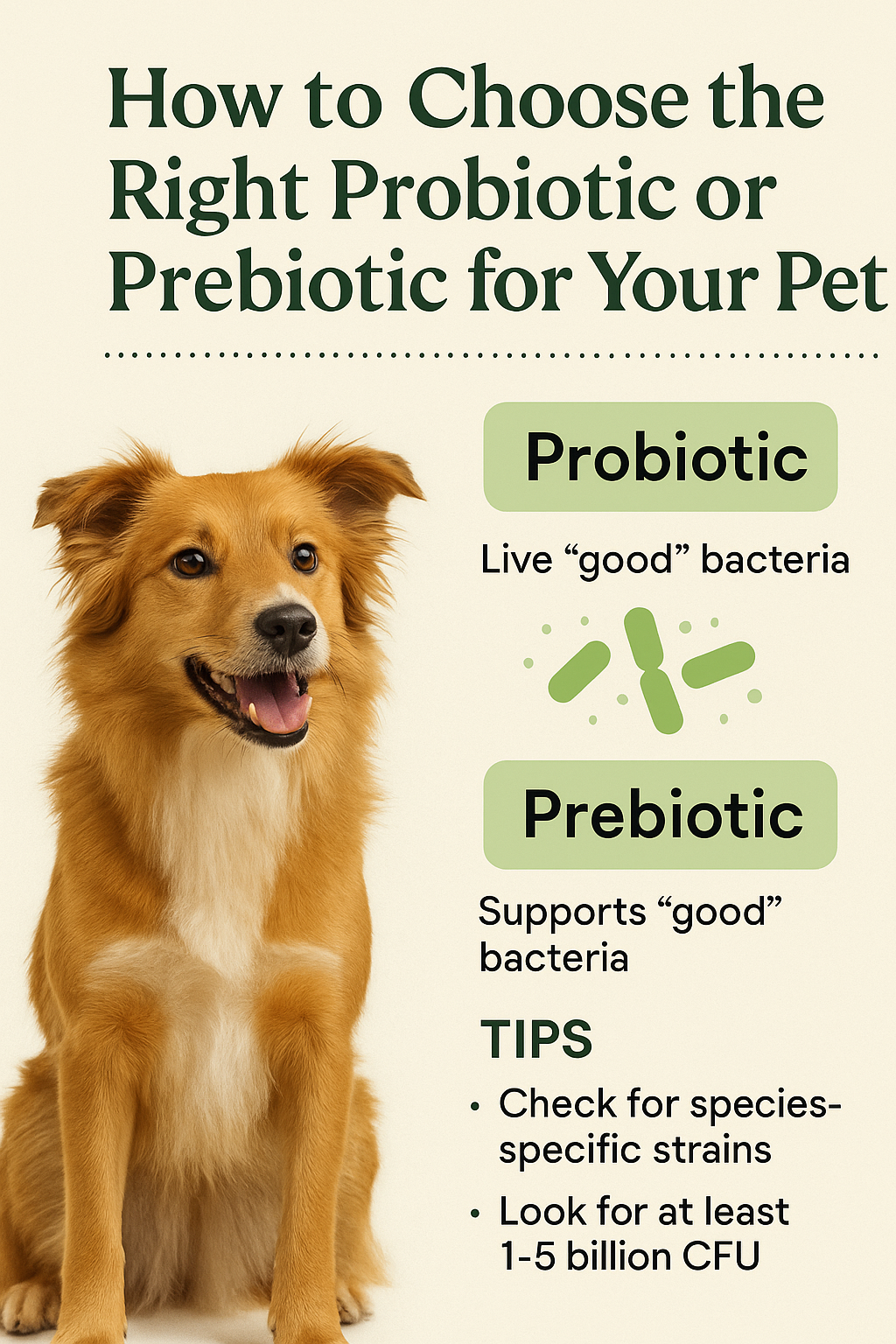
By now, you know your pet’s gut health plays a major role in their skin, digestion, and allergies. But if you’ve ever browsed the pet aisle or scrolled online, you know there are dozens of probiotic and prebiotic products claiming to help. How do you know which one to trust?
This guide breaks down what to look for in a high-quality supplement — and how to avoid wasting money on products that don’t deliver.
🧪 Probiotic vs. Prebiotic: What’s the Difference?
- Probiotics = live “good” bacteria that restore balance in the gut.
- Prebiotics = fibers that feed good bacteria and help them thrive.
💡 Think of probiotics as planting seeds and prebiotics as fertilizer. Together, they create a healthier microbiome.
🐾 What to Look for in a Pet Probiotic
- Species-Specific Strains
- Choose probiotics tested in dogs or cats (e.g., Enterococcus faecium, Bifidobacterium animalis).
- Human probiotics don’t always survive in a pet’s digestive tract.
- Colony-Forming Units (CFUs)
- Look for at least 1–5 billion CFUs per dose.
- More isn’t always better — balance and quality matter.
- Product Formulation
- Powders, capsules, or treats are fine as long as the product protects bacteria from stomach acid.
- Some use microencapsulation for better survival.
- Third-Party Testing
- Reputable brands test for purity and potency.
- Look for products backed by veterinary research.
🌱 Choosing the Right Prebiotic
- Common sources: inulin, chicory root, pumpkin, beet pulp, FOS (fructooligosaccharides).
- Benefits: feed good bacteria, improve stool quality, help regulate bowel movements.
- Tip: Prebiotics are often paired with probiotics in “synbiotic” supplements for best results.
🚩 Red Flags to Avoid
- Vague labeling (no strains listed, just “probiotics”)
- Expiration dates missing or long past
- Unrealistic claims (“cures all allergies overnight”)
- Excess fillers, artificial colors, or added sugars in treats
📋 Examples of Vet-Trusted Probiotic Products
- FortiFlora (Purina Pro Plan Veterinary Diets) – Enterococcus faecium, widely studied
- Proviable (Nutramax) – multiple strains, available in capsules and paste
- Visbiome Vet – high CFU count, used in clinical trials for GI disorders
(Always check with your vet before starting new supplements.)
📝 How to Introduce Probiotics Safely
- Start with the recommended dose.
- Give with food to improve tolerance.
- Expect minor GI changes (gas, softer stool) for a few days.
- Stick with daily use for at least 4–6 weeks before evaluating results.
✅ Final Thoughts
The right probiotic or prebiotic can make a big difference for itchy, gassy, or allergy-prone pets — but not all products are created equal. By choosing science-backed strains, proper dosing, and clean formulations, you’ll give your pet the best chance at lasting relief.
👉 Next in our series: we’ll explore anti-inflammatory foods that support pets with chronic allergies.
